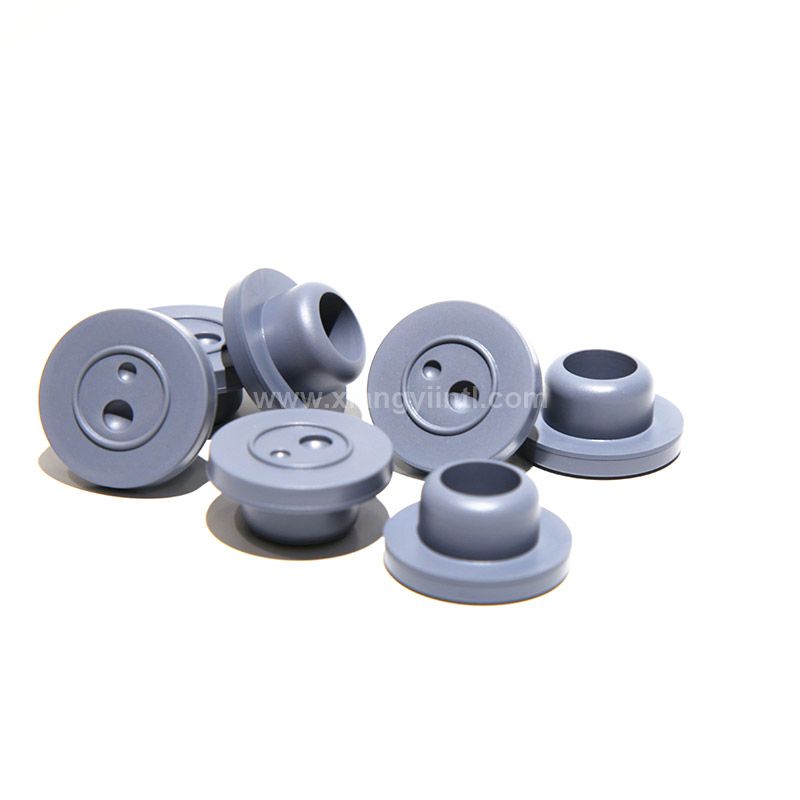Exploring the Diversity of Rubber Stoppers in Pharmaceuticals
Feb. 01, 2024
In the dynamic realm of pharmaceuticals, the choice of rubber stoppers plays a pivotal role in ensuring the safety, efficacy, and stability of medications. This comprehensive guide delves into the various types of rubber stoppers utilized in the pharmaceutical industry, shedding light on their distinct features and applications.

Butyl Rubber Stoppers: An Impermeable Shield
Butyl rubber stoppers stand as the stalwarts of pharmaceutical containment. Renowned for their impermeability, they create an effective barrier against moisture and gases, safeguarding the integrity of sensitive pharmaceutical formulations. This type of rubber stopper is particularly adept at preventing the ingress of oxygen, a critical factor in maintaining the stability of certain medications.
Bromobutyl Rubber Stoppers: Ensuring Product Purity
When it comes to pharmaceuticals demanding the utmost purity, bromobutyl rubber stoppers take center stage. These stoppers exhibit an exceptional level of cleanliness, minimizing the risk of particle contamination. Their low levels of extractables make them a preferred choice for pharmaceutical products requiring stringent quality control.
Chlorobutyl Rubber Stoppers: A Versatile Containment Solution
Chlorobutyl rubber stoppers strike a balance between impermeability and flexibility. This versatility makes them suitable for a wide range of pharmaceutical formulations. Whether it's vaccines, biologics, or sterile injectables, chlorobutyl rubber stoppers offer a reliable sealing solution without compromising on compatibility.
Flurotec-Coated Stoppers: Enhancing Compatibility
In the pursuit of compatibility and inertness, pharmaceutical manufacturers turn to Flurotec-coated rubber stoppers. The unique fluoropolymer coating minimizes interaction between the stopper and the drug product, ensuring the integrity of sensitive pharmaceutical compounds. This makes Flurotec-coated stoppers an excellent choice for high-value biopharmaceuticals.
Lyophilization Stoppers: Catering to Freeze-Drying Needs
Lyophilization stoppers, designed to withstand the rigors of freeze-drying processes, play a crucial role in the production of lyophilized pharmaceuticals. Their specialized construction ensures a tight seal during the freeze-drying phase, preventing contamination and maintaining the stability of the final product.
Selecting the Right Stopper for Pharmaceutical Packaging
Choosing the appropriate rubber stopper is not a one-size-fits-all decision. It involves a meticulous consideration of the specific requirements of the pharmaceutical product in question. Factors such as drug compatibility, container material, and the intended storage conditions all influence the selection process.
Factors Influencing Stopper Selection
Chemical Compatibility: Matching the stopper material with the drug formulation to prevent undesired reactions.
Container Material: Considering the type of container and its compatibility with the rubber stopper to ensure a secure fit.
Storage Conditions: Adapting the stopper choice to the intended storage conditions, whether it's room temperature or cold storage.
Conclusion: Elevating Pharmaceutical Packaging Standards
In conclusion, the world of pharmaceuticals relies heavily on the diverse array of rubber stoppers available. Each type brings its unique set of advantages, catering to the specific needs of different pharmaceutical formulations. Manufacturers must meticulously evaluate these options to enhance the safety and efficacy of their products.
260
0
0


Comments
All Comments (0)